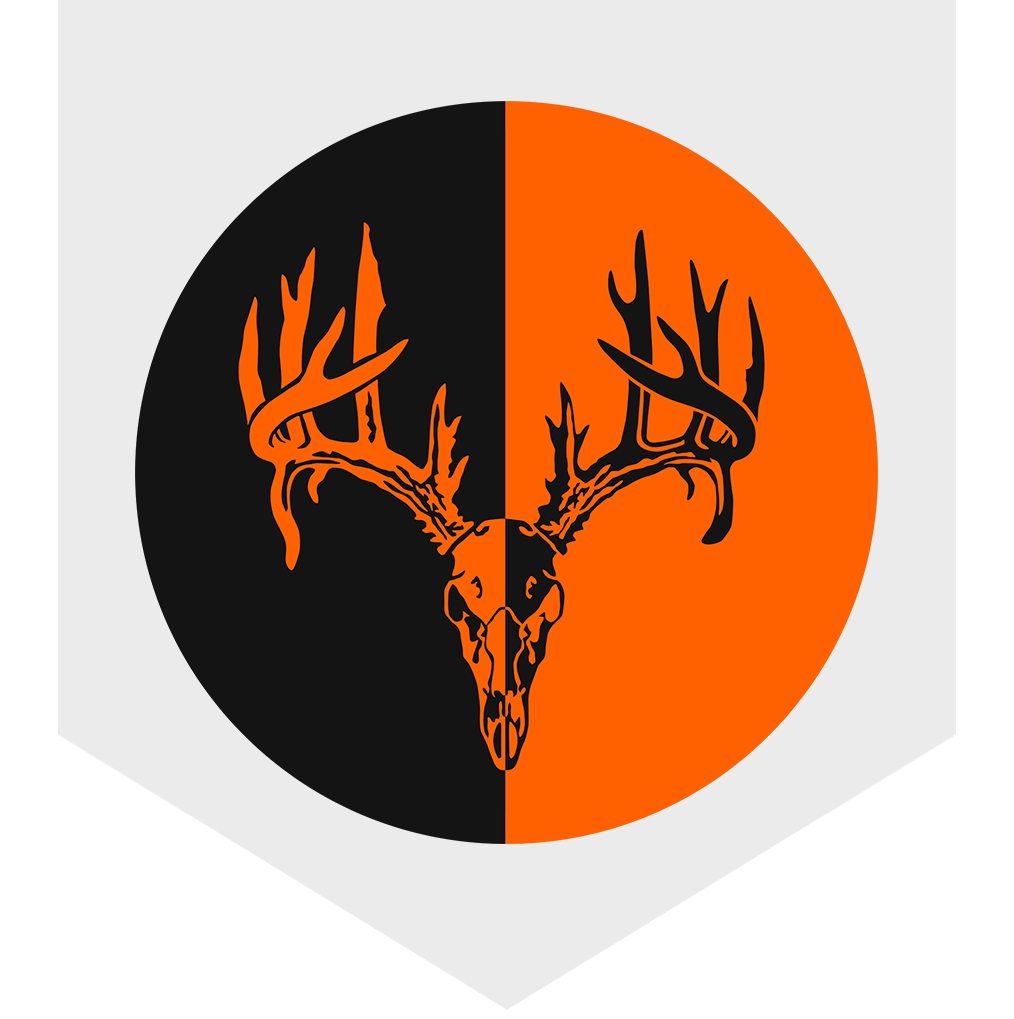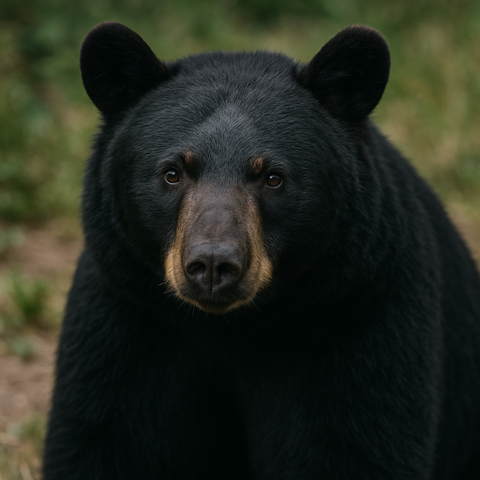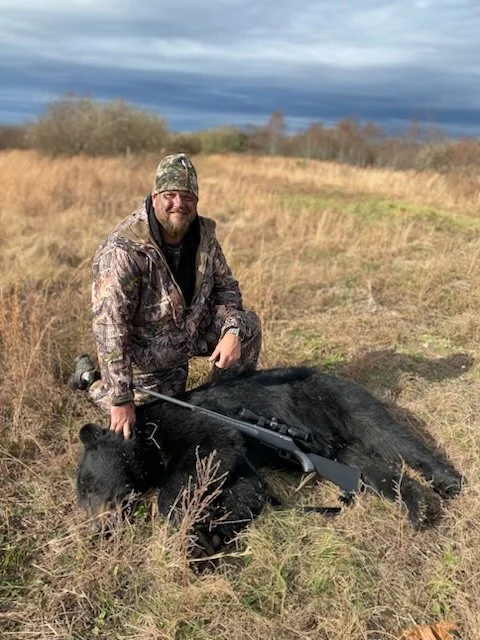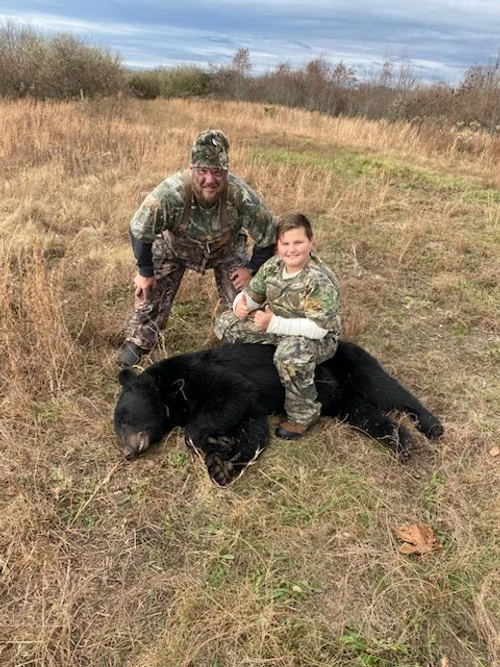Shadow Walkers: A Fall Bear Hunt in the Virginia Mountains
Written by: Terry Colley, Fall Obsession Field Staff
The first cold snap of October always flips a switch in a hunter. The air gets sharp, the leaves start to bronze over, and the mountains of Virginia take on that worn-in look that only a hunter notices. It’s the time of year when the black bears stop being shadows in the timber and start moving like they’ve got somewhere to be. And every fall is the best time to get one of those black furs.
It always begins the same: boots crunching on loose rock, breath fogging in the dawn, and the unmistakable smell of oak leaves rotting into the soil. Bears love this world—steep country, thick laurel, hidden benches—and in the fall, they live for the food it provides. Make no mistake: fall is eat season. When acorns drop, the mountains turn into a buffet, and the bears shift into high gear. They feed like machines, trying to pack on every ounce of fat before winter tucks them away in their dens.
I’ve learned over the years that if you want to find a bear, don’t look for the bear—look for the groceries. Bears won’t leave easy food, not in the fall. Bears will travel miles at night just to reach one productive oak tree. But when they find it, they settle in until the tree quits. That’s your chance.
The Rhythm of a Fall Bear
Black bears don’t run on the same clock as deer. They’re crepuscular at heart—moving early and late—but fall changes things. When they’re gorging on acorns and berries, they can stay active for hours.
Mornings often begin with a bear finishing up the night’s feeding.
Evenings are magic, when they ease out of the thick stuff to feed again before dark. And on those perfect fall days—cool air, heavy mast—they’ll wander through the timber at noon like oversized shadows slipping between the trees.
Breeding & Cubs
Virginia’s bear rut runs from mid-May into August, with the peak in early July. Sows usually breed every other year, raising 1–3 cubs, though 4 isn’t rare in big mast years. Those cubs are born in January, tucked deep in dens.
Hibernation
Mountain bears usually den from late October into December, depending on food.
Behavior
Most bears are shy. They want nothing to do with trouble. But they’ll defend cubs, defend food, and they’ll absolutely walk through areas most hunters think are “too thick” to hold animals. That’s why you always trust the sign over the scenery. Black bears are curious creatures, often messing with trail cameras, blinds and stands. Pop up blinds tend to be found shredded to pieces because they follow the scent and are looking for food sources.
My First Bear Tag
I earned my black bear rug in November 2021. I was whitetail hunting on our property in Southwest Virginia that we lease. The rut was in full swing with bucks chasing does non-stop.
On Sunday, November 21st, 2021, at 9:00am I had moved spots on the property and was walking to my blind. As I rounded the corner into the field opening, a doe came hauling right past me. In the distance I could hear the grunts and hoofs smacking the ground. Then, a nice 8 point run out into the middle of the field, I lifted my .308, pulled the trigger and the buck collapsed instantly, never moving. I field dressed the buck on the side of the field and left the carcass for nature to do it's thing.
4 days later I am hunting on Thanksgiving morning with my son. We are in the blind 1 hour before day break. As the sky started to wake up the world, I started watching the same field I had just killed my buck a few days prior, hoping to get my son his biggest buck. Out of the corner of my eye 75 yards away, I noticed something blackish moving, the dense fog that was lifting made it hard to focus in on what I was watching and passed it off as shadows. 10 minutes had passed when, all of a sudden, I noticed it was a black bear, he was tearing through the carcass. I turned to let my son know, and he was passed out, possibly dreaming of that big buck. I woke him up to let him know there was a bear at the end of the field.
I got myself ready in the hopes of filling that bear tag. A few minutes passed, and the bear started walking across the field with deer parts hanging from his mouth. It left like time had just stood still and was in slow motion. I placed the crosshair on him, and he stopped dead in the middle of the field. I squeezed the trigger and the .308 sent a tag punching bullet that pierced the bear right through the vitals. He dropped the deer parts he was packing, ran in 3 circles and fell over, making some noises.
I heard my son yelling, "You got the bear", "You got the bear." After waiting a short time, we walked down to the bear only to notice that he lay 5 yards from where I shot my buck a few days ago. It had al come full circle. It was an adrenaline-action-filled moment. That was my first black bear, topping out at 250 lbs and now hanging on my wall, a mount that brings up a pretty cool story and a lifetime memory. Each year now, I purchase that bear tag because filling a bear tag is not easy but rewarding when it all comes together.
Why I Keep Coming Back
Bear hunting in Virginia isn’t just a pursuit—it’s a relationship with the mountains themselves. Every fall hunt teaches you something. Some days you’re humbled. Some days you’re rewarded. But every day, you’re part of the oldest game on earth: hunter vs. wild. You learn that the woods are full of secrets, and the black bear is one of its sharpest keepers.
When you kneel beside a bear at last light, hand resting on its thick hide, you don’t just see the animal. You see the miles you walked, the ridges you climbed, the mornings you froze your fingers stiff waiting for a sign. You see the story—one you earned.




